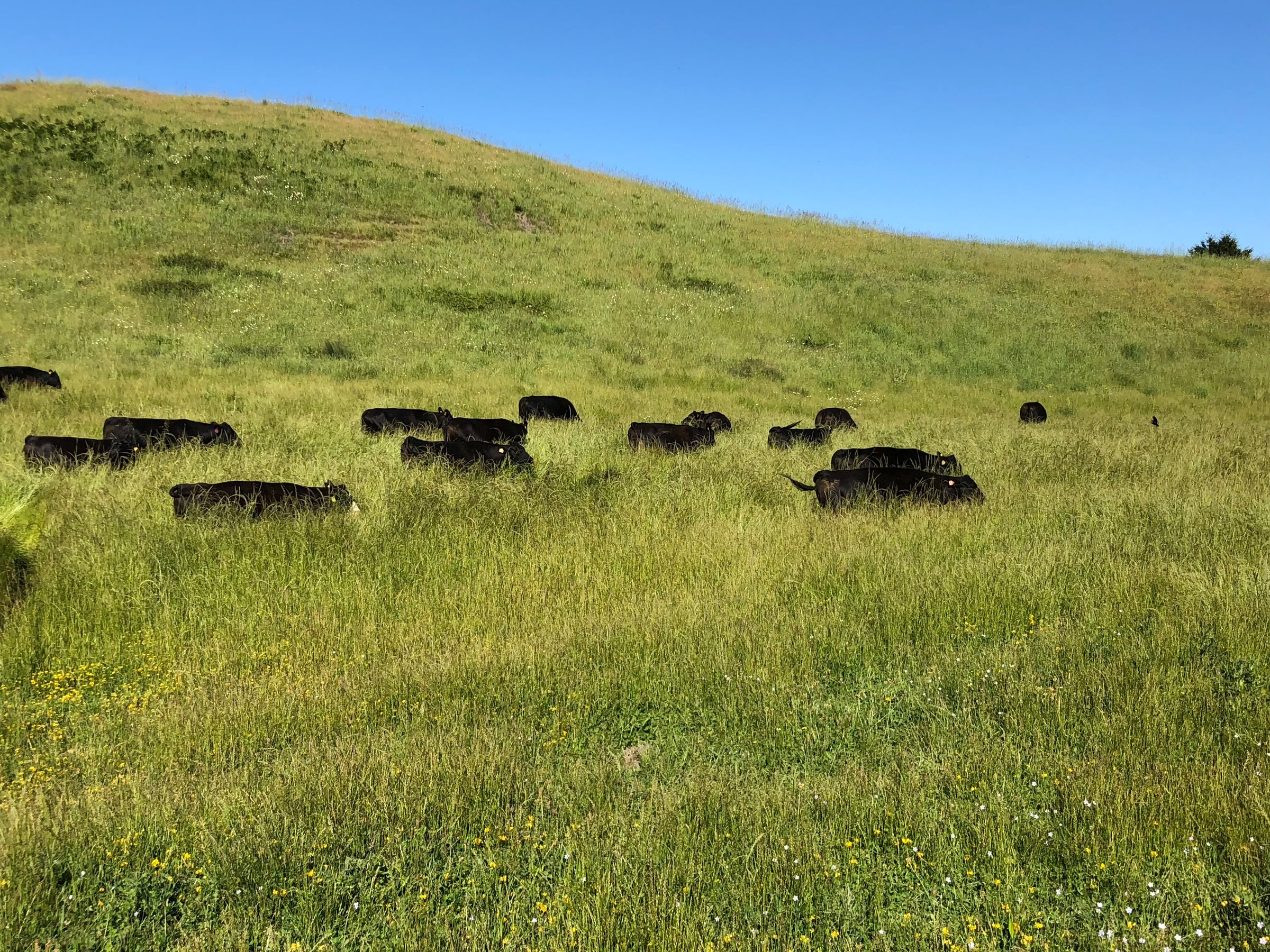Pomponio Ranch (PR) has a very long and colorful history, nestled at the headwaters of Pomponio Creek between the towns of San Gregorio and Pescadero. Pomponio Ranch was part of the original Mexican land grant and Pomponio Creek was named after a Native American man from the Yokut-speaking people in the San Joaquin Valley. He was given the name Pomponio when he worked at Mission Santa Clara, but he later rebelled against the mission system and became a resistance fighter. According to reports from the time, he had a mountain hideout near the headwaters of Pomponio Creek.

After that colorful beginning, Pomponio Ranch has been used to raise beef cattle, dairy cattle, Thoroughbred racing horses and oat hay since the 1880’s. The ranch has such natural beauty, many diverse ecosystems and is blessed with a small lake fed from springs and the run-off of seasonal rains. The lake provides water for all of our livestock and irrigation to grow oat and grass hay for our animals.

Pomponio Ranch’s latest chapter began in 2010 when the ranch was purchased by a local family who had a deep passion for the environment, animal husbandry, and the coastal ranching community. Since the land had been severely over-grazed, their first priority was to restore the grasslands to a vibrant eco-system. This led to the discovery of Holistic grazing management, a technique developed and advocated by Alan Savory (see his TED talk). Initially, it seemed counter-intuitive that you use a herd of cattle to heal overgrazed grassland. But we decided to give it a try.
The holistic grazing approach is similar to how herds of animals move in the wild. They bunch up to protect themselves from predators and trample the vegetation underfoot which turns into moisture-retaining mulch. Their urine and manure fertilize the ground. After they have eaten the grasses nearby, they move and the process repeats. On Pomponio Ranch, we mimic animal’s natural grazing behavior by bunching our cattle in 17 acre electric-fenced paddocks. The cattle feed and fertilize for a day, then we open the gate and the cattle walk to fresh grass in the adjacent paddock.
We are proud of how our grasslands have recovered and now produce a wider variety of nutritious grass longer during the growing season because our soil retains far more moisture. Holistic grazing also boosts our grass diversity, reduces erosion and boosts our water quality.
And it is a more sustainable way to raise cattle!


We began raising heritage pigs when one of our customers, a terrific chef, said he would love to buy great tasting pork raised in the same sustainable way we raise our beef. We call it pasture raised heritage pork because the breeds of pigs we raise are the old heritage breeds like Duroc, Berkshire and Old Spot. We find that crossing these breeds produces pork that is well-marbled, tender and tastes great! Customers who taste our pork for the first time tell us that they never knew pork could taste this flavorful!
Our whole team is proud of how we care for these animals. You can feel good about buying our meat. Raised better, Tastes Better!


